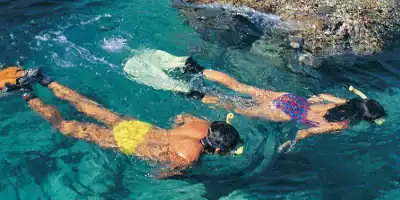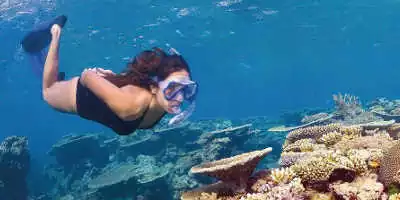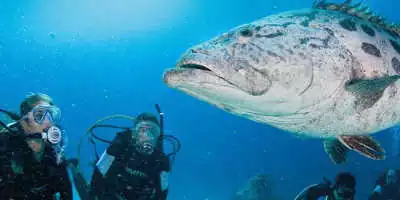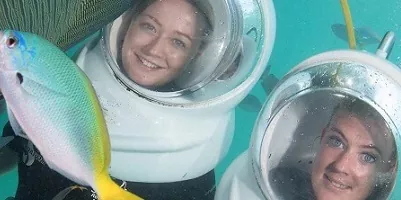
How does Sunscreen Damage the Reef?
Written by: Cameron Ward
Published: 05/20/2019
Reading time: 3 mins
There is nothing better than swimming through the sapphire waters of Queensland’s coast to see the epic assortment of colours and wildlife hidden within the Great Barrier Reef.
Listed as one of the seven wonders of the world, and the largest living thing on earth, it’s no wonder this attraction is on the top of everyone’s bucket list. With travellers spending countless hours snorkelling or diving through the many reefs and islands. But before you pack your things and set off, a small change in your suitcase might help reduce the continuing damage the reef faces every day; Sunscreen. It may be a surprise to some but the sunscreen you smear on your is slowly killing our beautiful Great Barrier Reef.
What’s in Sunscreen
It may be a lifesaver for our skin, but to the reef, it’s a slow killer. The lotions are mostly made of active ingredients that absorb and reflect harmful UVA and UVB rays. There are two forms, either chemical and mineral filters. The harmful chemicals that are within the sunscreen include ingredients like oxybenzone, nanoparticles, camphor, or methylparaben, which can all affect the reef differently but all negatively.
How it can damage the Reef
When travellers slip slop and slap before heading into the ocean, even waiting half an hour for it will dry won’t stop the harmful lotion to slowly melt off you. The harmful ingredients within the lotion seep into the nearby corals, disrupting their reproduction and growth development. If this occurs, it ultimately causes coral bleaching to occur. Leading to hundreds of wildlife to die or lose their home.
Sun-blocking Alternatives
-
Sun-protecting clothing
What’s simpler than protecting your skin by covering it up? Instead of shedding your clothes and baking in the sun for that summer tan, wear a t-shirt or long dress to help cover up your pale skin from those harmful rays. When swimming, try out some waterproof attire, using a rash top or wetsuit so you can swim freely about the reef without any guilt.
-
Reef -Safe Sunscreen
Don’t chuck out your sunscreen just yet for there are any lotions which are safe for the reef. These lotions swap out oxybenzone or octinoxate for a non-nano titanium dioxide or even a zinc oxide, helping swimmers be safe and sustainable all at once. We have Reef Safe sunscreen on board our Great Barrier Reef Tours. Look out for brands like Thinksport, All Good, and Babo Botanicals!
Related article: Top 5 Things to Do in the Great Barrier Reef.







